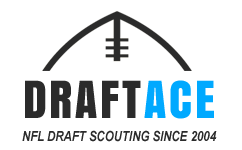The Bills swung for the fences in the 2018 NFL draft, selecting quarterback Josh Allen at No. 7 overall.
Allen was a deeply flawed prospect and it showed in his rookie year performance. Excluding throws shorter than five yards downfield, Allen finished with the worst on-target pass rate in the league among quarterbacks with at least 100 such attempts, according to Sports Info Solutions.
That said, Allen’s mobility and rocket-launcher arm also provided plenty of high points in his rookie year. The trick now will be finding ways to build around his strengths while also masking his flaws. And that should be the entire focus of the Bills offseason.
Offensive Line
Evaluating the Bills offensive line is difficult due to Allen’s tendency to hang on to the ball and scramble around—sometimes resulting in a spectacular play, sometimes ending in disaster.
According to Next Gen Stats, Allen took an average of 3.22 seconds to throw, the highest rate in the league. For a pure pocket passer, that stat can be used to evaluate the offensive line. For a scrambler like Allen, it says more about his indecisiveness with the football.
While Allen had issues protecting himself, that doesn’t excuse the poor performance of his linemen.
Dion Dawkins ranked 26th out of 33 left lefts in adjusted blown block rate in pass protection, according to Sports Info Solutions. On the right side, Jordan Mills, who is a free agent, wasn’t much better, ranking 20th out of 30 right tackles (min. 200 snaps in pass protection).
The Bills already made an early move, picking up Spencer Long to replace Russell Bodine at center. Long had been cut after just one disappointing year with the Jets. Long’s adjusted blown block rate in pass protection ranked 20th out of 30 centers, and as a run blocker he ranked 26th. So whether or not he’s actually an upgrade over Bodine remains to be seen.
Mills and right guard John Miller are both free agents. Given their performance in 2018, a return is unlikely.
Realistically, all five positions could be upgraded. However, Dawkins, who is just two years into his career, and rookie left guard Wyatt Teller, are likely to be given more time to develop and should return to a starting role somewhere along the line.
Weapons for Allen
Allen isn’t going to magically develop into the quarterback Bills fans hope he can become if the team doesn’t first surround him with the weapons he needs to succeed. And so far this offseason, they’re moving in the wrong direction, having released tight end Charles Clay which saves them just over $4 million.
As long as Allen is their quarterback, the Bills are going to be a team that attacks downfield. According to Sports Info Solutions, Allen attempted 18.4 percent of his passes at 20 or more yards downfield last season, by far the highest rate in the league. No one else was above 14.7 percent (Mitch Trubisky).
In 2018, Zay Jones and Robert Foster were used interchangeably as deep threats with Jones leading the way with 21 deep targets to Foster’s 20.
Neither receiver stood out, but Jones appears to be the one worth keeping around. Jones caught seven of his 10 catchable targets (70 percent), while Foster caught just seven of 13 (53.8 percent). Among players regularly used as a deep threat, the average catch rate on catchable targets was 72.3 percent, according to Sports Info Solutions.
Since Jones will be back in his role (and possibly Foster too), what the Bills need to add to the arsenal is a bigger target for Allen, especially for use in the red zone.
Jones led the team with 18 red zone targets (no one else had more than six), but he caught just eight of those passes (44.4 percent), the worst catch rate on the team.
In a deep class of pass-catching tight ends, it would make sense for the Bills to target one early to give Allen a more well-rounded receiving corps with which to work.
Running Back
There’s nothing wrong with LeSean McCoy, but he’s 30 years old and has just one year remaining on his contract. It’s time for the Bills to start planning for life without him.
It would probably make sense for the Bills to addressnz the position in the middle rounds of the draft in order to bring someone in to lighten McCoy’s load in 2019 and potentially take over in 2020.
Chris Ivory is still under contract as McCoy’s backup, but he’s a plodding downhill runner who isn’t an ideal fit anywhere in today’s NFL. On rushing attempts to the outside, only LeGarrette Blount averaged fewer yards per attempt than Ivory’s 2.84, according to Sports Info Solutions. The Bills weak offensive line is definitely partially to blame for that number, but a more elusive running back would add another dimension to the offense.
A prospect such as Florida Atlantic’s Devin Singletary or Oklahoma State’s Justice Hill could potentially fill that void.


